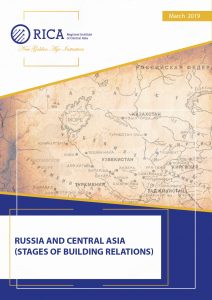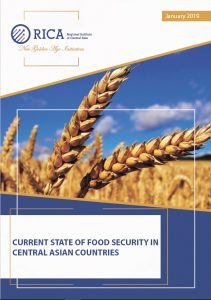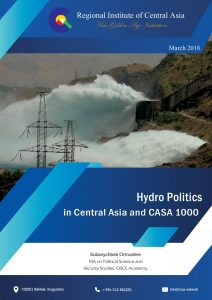 With the decease of confrontation of two superpowers, the transition to a new system of international relations began, which posed complex strategic questions for humanity about the nature of changes in the world and about the dominant factors of power. They will play a major role in ensuring stability and security in the future. The collapse of the Soviet Union, Yugoslavia and a number of other countries weakened the political and economic situation and contributed to the formation of the Eurasian “arc of instability” covering the Balkans, the Middle East, Transcaucasia, South and Central Asia, where new sovereign states appeared.
With the decease of confrontation of two superpowers, the transition to a new system of international relations began, which posed complex strategic questions for humanity about the nature of changes in the world and about the dominant factors of power. They will play a major role in ensuring stability and security in the future. The collapse of the Soviet Union, Yugoslavia and a number of other countries weakened the political and economic situation and contributed to the formation of the Eurasian “arc of instability” covering the Balkans, the Middle East, Transcaucasia, South and Central Asia, where new sovereign states appeared.
After the geopolitical “collapse” of the early 1990s, other cultures rushed into the ideological vacuum in Central Asia. An attempt was made to introduce elements of the Atlantic, European civilization here, which caused opposition and aggravated the problems of the transit countries of the region. The geopolitical status of Central Asia has changed, here comes the clash of interests of world and regional powers. The causes are known – the risks of a global energy crisis (due to the depletion of hydrocarbon reserves) and the failure to search for alternative sources of energy; the growing threat of the spread of extremism and international terrorism; drug business. These global challenges of our time reinforce the interest of outside world in Central Asia. In a new world, Central Asian states found themselves in a zone of instability.
Today in Central Asia a new international political space is formed where Russia and the states of the region determine the spheres of interests, develop strategies of foreign policy and national security, make changes to the system. In recent years, Moscow has paid more attention not only to cooperation in the field of regional security, but also to integration in the economic sphere.
 Abstract
Abstract
This paper presents the parameters of the new economy model, which has received the name “creative” among the experts. The author draws attention to certain achievements in the creative economy on the example of the developed countries of Europe and Asia. There are some advances in this regard also in Central Asian region, they are shown in comparative perspective.
Kyrgyzstan is considered here as the most acceptable model for creating a creative “hub” in Eurasia. Potential realizable opportunities in this direction with already embodied elements on the basis of the developed program are noted.
The commercial importance of the creative economy is evident in the perspective of the contribution that it already makes to the structure of the national gross domestic product of the country, stimulating innovation and technology. At the same time, there is significance in terms of reproduction of the cultural heritage of nations, in terms of ensuring the process of self-identification of states.
On the basis of the conducted research for the countries of Central Asia, specific recommendations were made for the implementation of the fundamental principles and policy provisions of the creative economy.
January 2019
 Abstract
Abstract
Today the problem of food security is more important than ever before. This also applies to the countries of Central Asia, where the agrarian sector, having passed through a period of crisis in the region’s transition to a market economy, is now experiencing growth and gradual development. This paper discusses modern approaches to the concept of “food security”, showing the distinctive features and level of the state process of ensuring food security in Central Asian countries.
January 2019
 After gaining independence hydro-rich countries
After gaining independence hydro-rich countries
Tajikistan and the Kyrgyz Republic were seeking for
possibilities of developing their hydro-electric energy
potential and export electricity surplus, but it was impossible
without major investments in construction of electric energy
facilities and transmission lines in these states. Another
problem was poor cooperation of CA states. So CASA 1000
project seems to resolve this hydro energy export problem.
Tajikistan and the Kyrgyz Republic in Central Asia,
Afghanistan and Pakistan in South Asia have been pursuing
the development of a Central Asia South Asia Regional
Electricity Market (CASAREM). These four countries have
intensified their cooperation since 2005 among themselves
and with the International Financial Institutions (IFIs)
comprising the Asian Development Bank (ADB), the
European Bank for Reconstruction and Development
(EBRD), the International Finance Corporation (IFC), the
Islamic Development Bank (IsDB) and the World Bank (WB).
March 2018

China as an assertive regional player is developing complex system of neighborhood interdependence that would facilitate its continuous economic growth. From this perspective Central Asian region could be seen as having core position in the system of complementary development based on the Western China Development Strategy and the Silk Road Economic Belt. The role of the region cannot be seen simply limited to the supplementary source of natural resources or part of the transport corridor. It shall be seen as integral part of the future matrix of interdependency. Such potential role could be especially identified in regional energy security architecture. China is an active player in the upstream petroleum industry in Central Asian countries. It is diversifying its energy supply with direct oil and gas import from the region by building transnational pipelines (the Kazakhstan–China oil pipeline, the Central Asia–China gas pipeline). Furthermore, China is also being increasingly involved in the downstream petroleum industry (e.g. the China Petrol Company Zhongda’s investment in the Petroleum Refinery “Zhongda” in Kara-Balta, or the construction of the petroleum refinery in Tokmok by the Xinjiang International Trade and Industry Company – both cities located in Kyrgyzstan).
February 2018
 With the decease of confrontation of two superpowers, the transition to a new system of international relations began, which posed complex strategic questions for humanity about the nature of changes in the world and about the dominant factors of power. They will play a major role in ensuring stability and security in the future. The collapse of the Soviet Union, Yugoslavia and a number of other countries weakened the political and economic situation and contributed to the formation of the Eurasian “arc of instability” covering the Balkans, the Middle East, Transcaucasia, South and Central Asia, where new sovereign states appeared.
With the decease of confrontation of two superpowers, the transition to a new system of international relations began, which posed complex strategic questions for humanity about the nature of changes in the world and about the dominant factors of power. They will play a major role in ensuring stability and security in the future. The collapse of the Soviet Union, Yugoslavia and a number of other countries weakened the political and economic situation and contributed to the formation of the Eurasian “arc of instability” covering the Balkans, the Middle East, Transcaucasia, South and Central Asia, where new sovereign states appeared.










